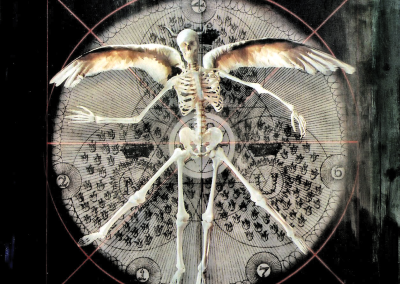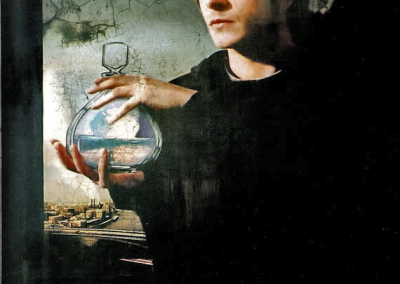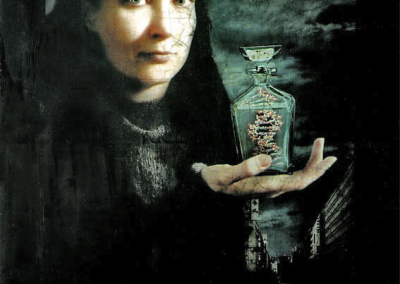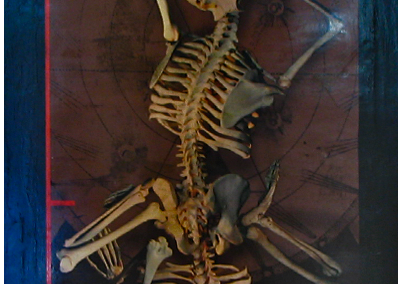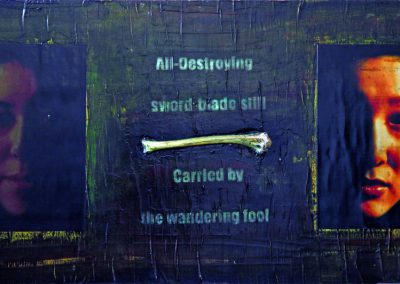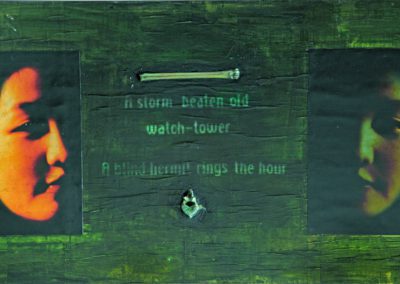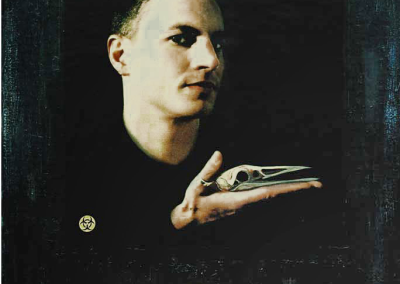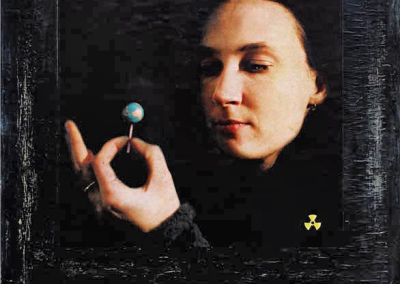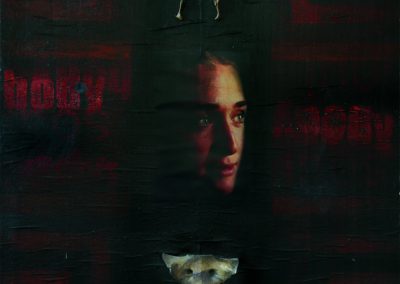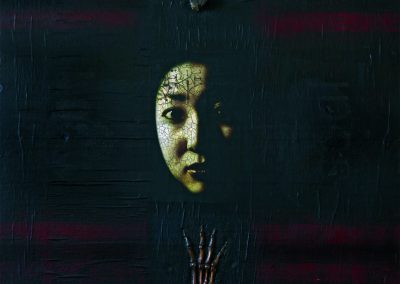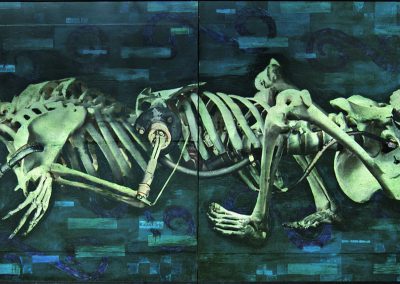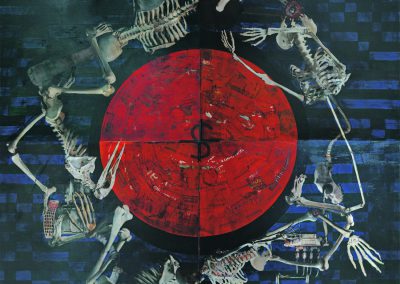„Urbans“
2003–2005
Human bones find new lease on life in art
…According to Nukke, it was working with the ideas of fantasy and religion, specifically icons and relics, that led to her interest in bones about two years ago. Her first bone series was six collages entitled „Body or Soul“. Not all use human
bones – some are animal bones she found on her travels. But all combine at least on bone with a photoshopped portrait or two, and sometimes a few lines of a Yeats poem.
This way of mixing human remains with faces and poetry seems a fairly bold exploration of the relationship between body and soul. „They are separate and connected, like black and white,“ Nukke explained.
Her second series, while it uses photos of bones rather than the real thing, might be even spookier. These works, entitled „Urbanid“ or „Urban Animals“ are photoshopped and digiprinted manipulations combining human skeletons with animal elements.
Steve Roman
The Baltic Time 2004, 7.10
Lacquered jawbones of fellow species
According to Mari Sobolev, Mall Nukke is making bone art.
Mall Nukke, who has already carefully converted today’s overly media focused everyday world into religious trimmings, now finally sets to work on reliquaries. While icons are simple representations of a religious idea, reliquaries are much more tangible. So what, if most of them are fakes. Even a fake thing is more than an image.
Nukke doesn’t mess with pieces of the true cross or sweaty cloths, no; she goes straight for the bones. Sacred bones are without doubt one of the earliest forms of body art, and throughout history they have been one of the most influential, both emotionally and in terms of popularity.
Eesti Ekspress, Areen, 2002, 5 September
Mall Nukke looks from the built world to a strange growing future
Mall Nukke, with her exhibition „Urban“ has, if not in content then definitely geographically, come full circle.
A couple of years ago she brought the first part of the „Urbanite“ exhibition to Pärnu and now she is showing the third at the Endla Theatre Gallery.
Though the exhibition bears the title „Urbans III“, the number is a hint that these are new works and not previously unseen pictures. „Urbans“, „Urbans I“ and „Urbans III“ are all one exhibition that has been completed in stages because it has been an enormous project.
The second part didn’t reach Pärnu, but was only shown in Tallinn. This third chapter comprising ten large works will remain here in Pärnu until the first weekend of August.
Since all the „Urbans“ form one complete whole there is no point in speaking of any development, and this is confirmed by Nukke.
„It is fairly expensive to produce one large exhibition so I continue working on the same exhibition until the body of work that I had planned in the beginning was complete. It will take another two or three years,“ said Nukke.
In Estonian, there is no corresponding word for “urban”, the title of the exhibition, but in English the adjective “urban” denotes something related to the city. Nukke took this word into use in Estonian, and in the way that Hellenic refers to a Greek person; an urban is a city person.
According to Nukke’s explanation, an urban is someone who has become distanced from nature and is surrounded by a built environment of his own creation. With the „Urbans“ exhibition, the artist is fantasizing about where the urban could end up and ever so slightly moves into the realm of science fiction with new creatures and species that develop in this city.
Kaupo Meiel,
Pärnu Postimees, 2005, 27 July
The asphalt between human beings and the soil
A young artist represents a mankind that has become separated from the soil by asphalt in the manner of pop art or cold hyperrealism. In Nukke’s work there is passion and a personal touch. She is not ashamed to attach her own personal concepts and visions to the people she portrays.
Nukke has managed to retain a pubescent interest in the mystical, and her work has a certain gothic(rock) tone and utilises its visual language, but as a trained artist in early middle-age she makes it much more complex. She achieves a magical, even “old fashioned” sense of colour with a special technique of her own, and not just by smearing black over the work.
In Nukke’s pictures, the symbolic skull, that has travelled from religious art into heavy metal iconography, has turned into monster skeletons that immediately recreate a link with the science fiction hybrid mutants in the future world of David Cronenberg’s „eXistenZ“.
Mall Nukke’s image of the world is no doubt influenced by science fiction films, role games, popular science and other alternatives that today’s world of glamour offers us instead of religion.
Siram, art critic
Postimees, 2005, 02 August
